Baby food basics
![]() Remember that your baby will learn quite quickly to eat foods of varied textures. There’s no need to stock up on large quantities of baby food!
Remember that your baby will learn quite quickly to eat foods of varied textures. There’s no need to stock up on large quantities of baby food!
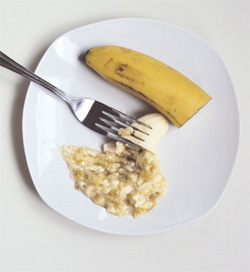
![]() Your baby can gradually start eating soft foods mashed with a fork or cut into small, soft pieces.
Your baby can gradually start eating soft foods mashed with a fork or cut into small, soft pieces.
In this section, you’ll find information about introducing pureed foods and moving on to other textures. You’ll learn how to prepare homemade baby purées and purchase commercial baby food. You’ll also see how to warm and store purées.
Progression of texture
When first introducing foods, you can start by giving your baby smooth purées.
Some babies will be ready right away for thicker, lumpier purées blended for only a short time or mashed with a fork. Others will find it more difficult to adapt, in which case you can gradually alter the texture from one meal to the next.
Some babies will rapidly accept food that is finely chopped or cut into small, soft pieces. There is no need to wait until your child has teeth, since he can already chew with his gums and enjoys doing so.
The goal is to progress so that by around 1 year of age, your baby is able to eat foods in a variety of textures. But be careful with foods that present a risk of choking (see Choking risk: Be extra careful until age 4).
Homemade baby food
Homemade baby food provides excellent nutritional value. It is fresher, more varied, better tasting, and less expensive than commercial baby food. What’s more, it has the advantage of containing only the ingredients you choose.
Purchasing foods
Select the freshest fruits and vegetables possible. If using frozen products, make sure they don’t contain any salt, sugar, or seasoning. Buy lean meat whenever possible.
If you use frozen foods, make sure they don’t contain any sugar, salt, sauce, or seasoning. If you opt for canned foods, make sure they don’t contain added salt or sugar. You can rely on the ingredients listed on the label.
Hygiene
Wash your hands and clean your cooking utensils and work area carefully before you start preparing baby food, as well as each time you change foods.
How to prepare vegetable and fruit purées
![]() Adding salt or sugar is not recommended.
Adding salt or sugar is not recommended.
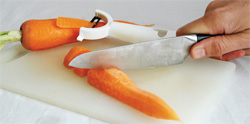
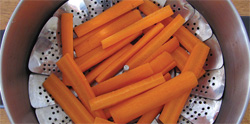
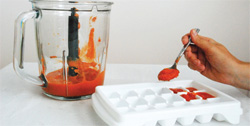
Preparing fruit and vegetable purées is easy.
- Wash all fruits and vegetables before cooking.
- If necessary, remove peels, cores, pits, and seeds.
- Cut the fruits and vegetables into pieces.
- If necessary, cook the ingredients. It’s best to steam (in a vegetable steamer, for example) or cook them in the microwave.
- Check if it is done. You should be able to stick a fork into it easily.
- Purée the food using a fork, blender or food processor. You can add liquid to obtain the desired texture, e.g., fresh water or cooking water.
How to prepare meat, poultry, and fish purées
![]() Don’t add salt during or after cooking.
Don’t add salt during or after cooking.
Preparing meat and poultry purées
Take certain precautions when cooking meat or poultry for your child.
- Remove skin from poultry and any visible fat from meat.
- Cut meat or poultry into pieces.
- Cook in plenty of water. Meat is cooked enough when you can easily cut it with a fork.
- Remove bones.
- Put the meat or poultry in a blender.
- Purée, adding enough cooking liquid to obtain the desired texture.
Preparing fish purées
Certain precautions should also be taken when preparing fish purées:
- Cook fish in water on the stove or in the microwave, without adding any salt.
- Carefully remove any bones.
- Break up the fish with a fork or purée it with the cooking liquid.
How to freeze homemade purées
If you want to make purées in advance, it’s best to freeze them immediately after preparation. To do so:
- Pour the purée into ice cube trays while it is still warm.
- Cover and cool in the refrigerator.
- Put the ice cube trays in the freezer for 8 to 12 hours.
- Transfer the frozen purée cubes to a freezer bag.
- Remove the air from the bag.
- Write the name of the food and the cooking date on the bag and then put it in the freezer.
To find out how long you can keep purées, see Storing baby food.
Commercial baby food
Whether jarred or frozen, commercial baby food has good nutritional value. It’s very practical since it’s always ready to eat, but it costs more than homemade baby food. Some commercial baby food contains unnecessary ingredients like starch, sugar, flour, tapioca, or cream that decrease the nutritional value. Read the list of ingredients on the packaging to choose products without unnecessary additions.
Purchasing commercial baby food
There are many kinds of puree available. Purées containing only meat or vegetables may be easier to use as they allow you to better assess the amount of meat and vegetables your child is eating.
Vegetable-meat combinations – These can be handy on occasion, but don’t contain very much meat. Frozen products generally contain more meat than jarred ones.
“Junior” purées – These purées contain small pieces of food designed to facilitate the transition from baby food to regular food that the family eats. However, they are of limited benefit because you can achieve the same results by mashing foods with a fork.
There are also ready-to-eat meals. These products contain salt and should not be given to children under 12 months old. After this age, your child can simply start sharing meals with the family.
Handling commercial baby food
Here are a few steps to take in order to eliminate the risk of food poisoning:
- Throw out or return any jars that have rusted lids or chipped glass, or do not make a popping noise when you open them.
- Store unopened jars according to the best-before date and use the jars with the closest date first.
- Put only as much food as you will use in a small bowl and refrigerate the rest immediately.
Commercial baby food can be frozen for the period indicated in the Storing baby food table below.
Serving baby food
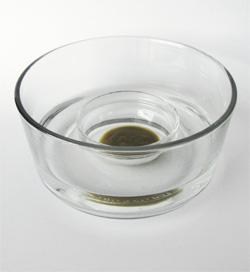
![]() Make sure family members and babysitters fully understand how to warm baby food.
Make sure family members and babysitters fully understand how to warm baby food.
![]() Microwave precautions Microwaves do not heat food evenly. That’s why it is important to take certain precautions:
Microwave precautions Microwaves do not heat food evenly. That’s why it is important to take certain precautions:
- Warm the baby food in a small, microwave-safe dish.
- Stir it well once it is warm.
- Wait around 30 seconds. Before serving the purée, check the temperature using the back of your hand or the inside of your wrist.
Warming baby food
To warm fresh or refrigerated baby food, you can use one of the following three methods:
- Put the purée on the stovetop in a small saucepan or double boiler and warm over low heat.
- Put a small amount of food in a glass bowl and let it warm slowly in hot water for a few minutes.
- Put the food on a small plate and heat it in the microwave. Carefully read the section on microwave precautions.
Whenever possible, warm only as much baby food as you will need. Before feeding your child, always check the temperature using the inside of your wrist or the back of your hand.
To limit the risk of contamination, throw out any leftover baby food.
How much to serve?
Start by offering your baby 3 to 5 ml (½ to 1 teaspoon) of purée. If she readily accepts it, continue until she is satisfied. Let her appetite be your guide.
As you introduce new foods, you can offer different types of purées at the same meal.
Gradually increase the quantity over time.
Storing baby food
![]() Do not refreeze thawed food.
Do not refreeze thawed food.
Homemade and commercial baby food can be stored according to the storage life indicated in the table below:
| Type of food | Refrigerator | Freezer |
|---|---|---|
| Vegetables and fruit | 2 to 3 days | 2 to 3 months |
| Meat, poultry, fish | 1 to 2 days | 1 to 2 months |
| Meat with vegetables | 1 to 2 days | 1 to 2 months |


